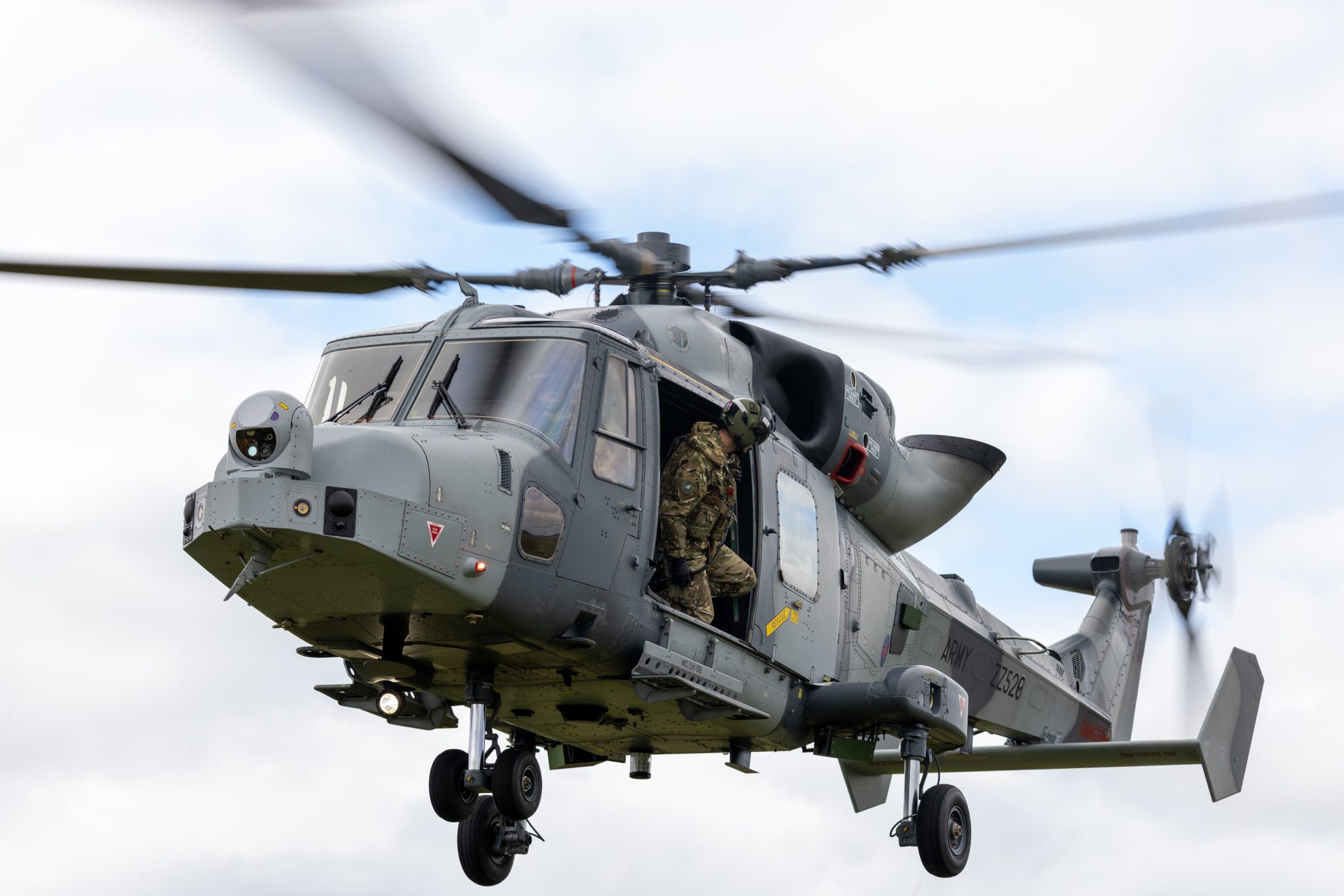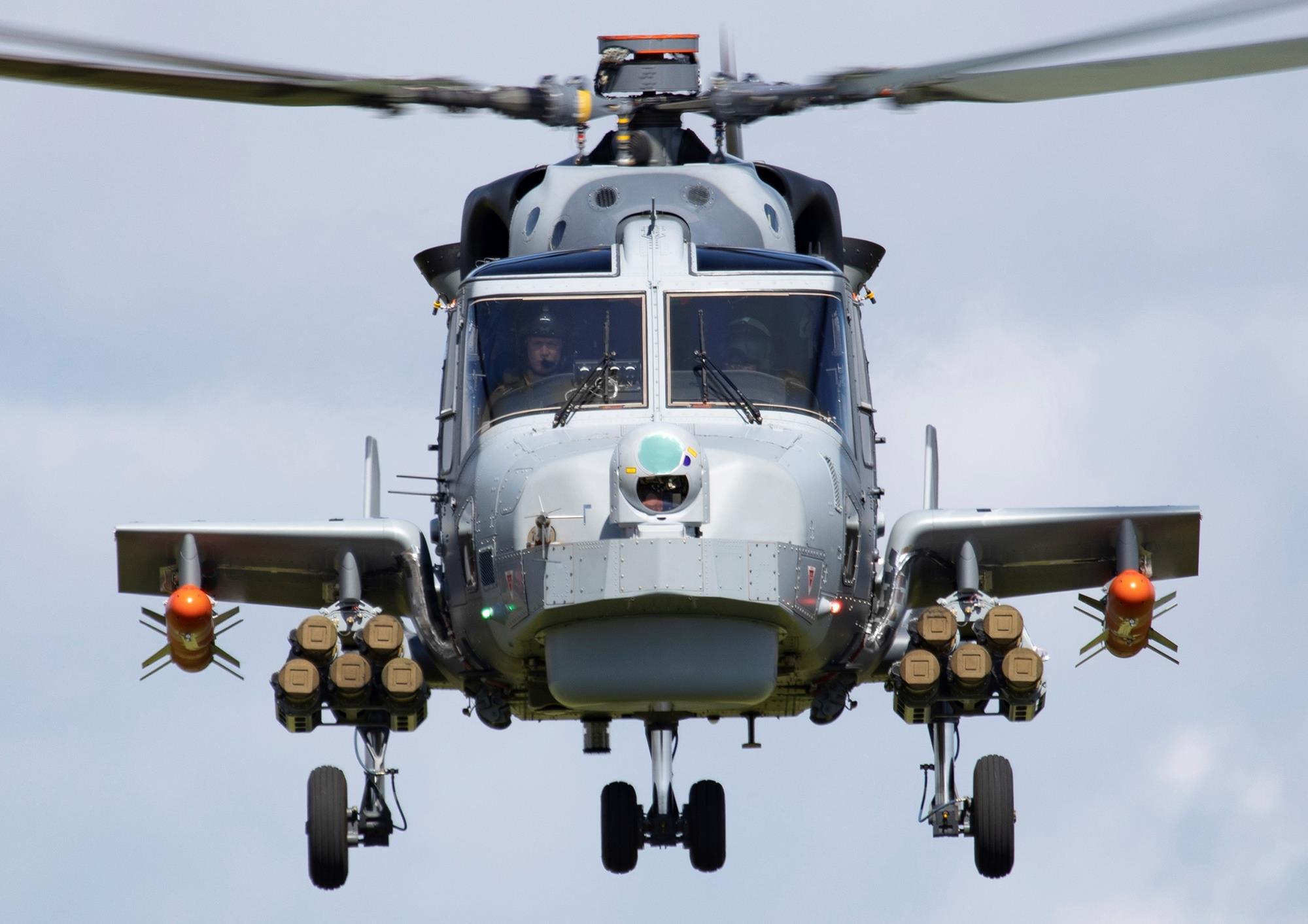
The TDL is a joint project between the Army and the Royal Navy that includes two data links, Link 16 and Bowman Data.
The Wildcat’s new surveillance system is called the Leonardo AW159 Surveillance Reconnaissance Intelligence System (SRIS). It is a sophisticated electro-optical and infrared (EO/IR) sensor suite that provides enhanced situational awareness and intelligence gathering capabilities.
The SRIS incorporates advanced sensors and camera systems, including high-definition EO/IR cameras, laser range finders, and a laser illuminator. These sensors enable the Wildcat helicopter to capture high-resolution imagery and conduct surveillance, reconnaissance, and intelligence-gathering missions with greater precision and effectiveness.
The new surveillance system enhances the Wildcat’s capabilities in a wide range of operational scenarios, including anti-surface warfare, counter-piracy operations, force protection, and littoral (coastal) operations. It improves the helicopter’s ability to detect, identify, and track targets on land or at sea, providing crucial information to commanders and decision-makers.
Overall, the addition of the Leonardo AW159 SRIS to the Wildcat helicopter represents a significant enhancement to its surveillance and intelligence capabilities, enabling it to carry out a broader range of missions with increased effectiveness.
Colonel Oliver Stead of 1st Aviation Brigade Combat Team, explained how this will work:
“What this project is seeking to do is link a battlefield reconnaissance helicopter into the Bowman Data Network, which means we’ll be able to share digital information about the positions of the enemy. What that will mean is that a Wildcat will be out in a tactical position, it will identify an enemy vehicle or location, and will be able to transmit that over the Bowman network.
The goal is to tie it into the artillery fire control system so they can then prosecute the target or to send it to other users who would do that. When combined with the Army’s latest Attack Helicopter, the AH-64E, it will significantly enhance the Army’s Attack Reconnaissance Teams by reducing the time it takes to pass targeting information around the battlespace.”

It will allow the Wildcat to share battlefield data more efficiently, making it a “more effective reconnaissance platform and giving it the ability to quickly neutralise targets”.
The TDL will be integrated into Wildcat’s existing sensor suite, reducing the need for voice communications and increasing its ability to work with other digital networks.

If the trials are successful, this will be the first time that Bowman Data has been integrated into a battlefield helicopter.
The TDL is part of the British Army’s modernisation efforts under the Future Soldier program, which aims to increase the army’s ℓєтнαℓity, agility, and expeditionary capabilities.





